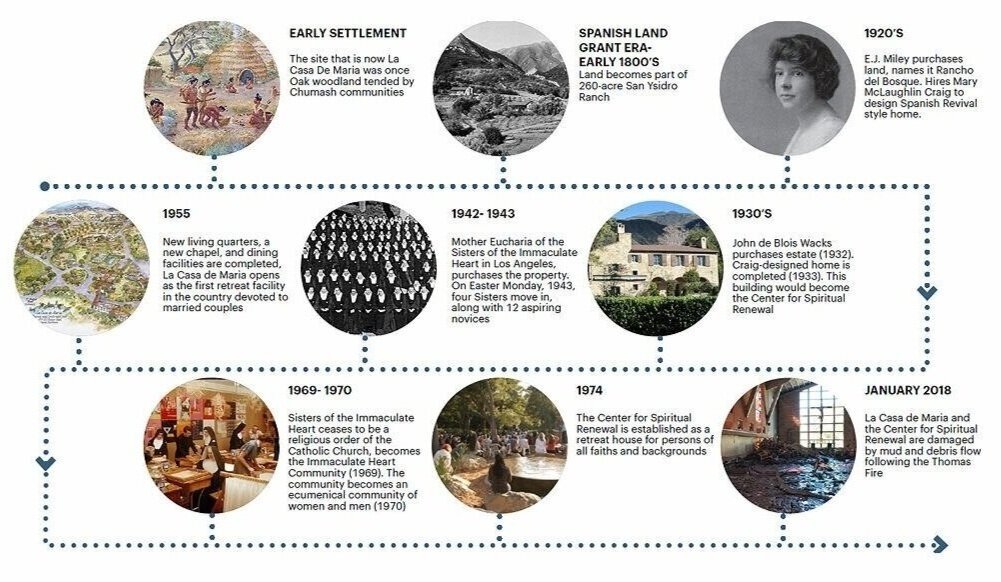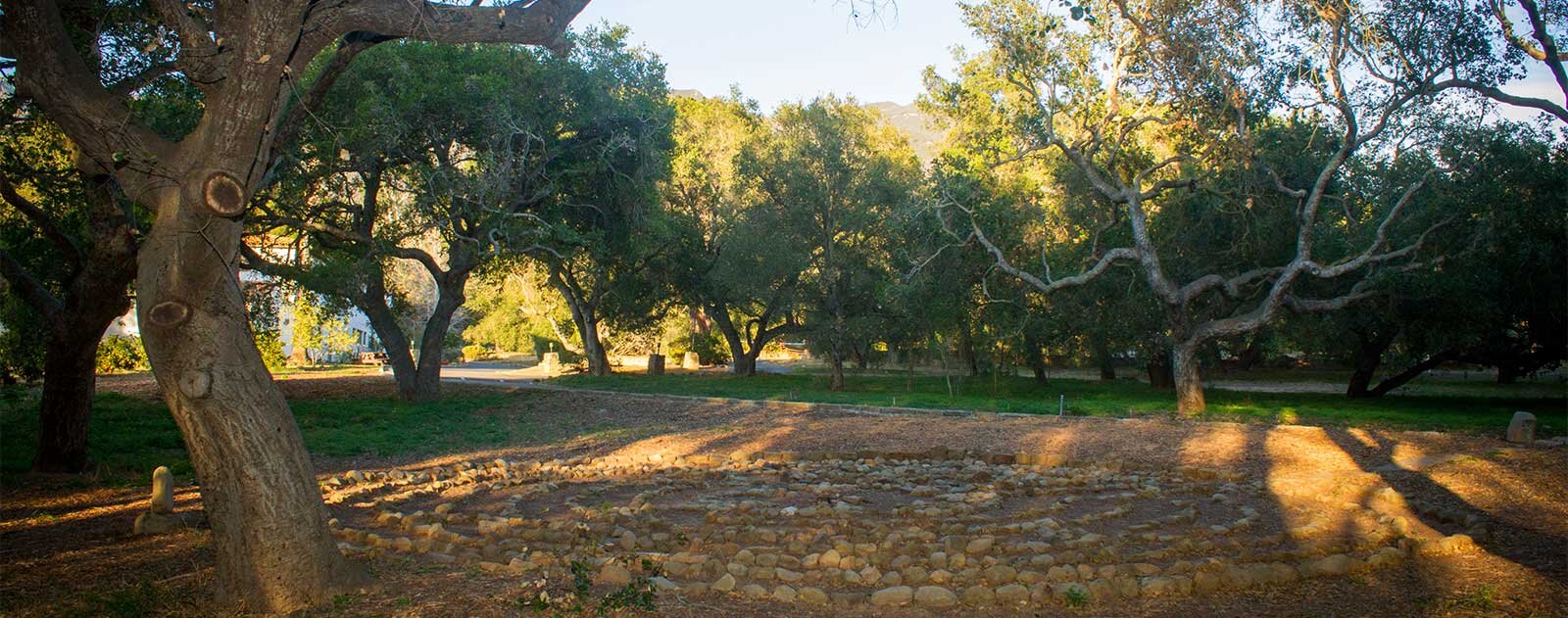
La Casa’s Mission & Vision
Mission: To be a sanctuary of peace where all may strengthen purpose, build community, and foster a culture of social justice and respect for the earth.
Vision: To provide, through its programs and its environment, a place where persons of all spiritual paths search for wisdom, engage in dialogue, embrace the sacred, and nourish body, mind and spirit, so that refreshed and renewed, they participate more responsibly in the creation of a just, peaceful world, and a whole, healthful earth.
Located on 26 acres along the banks of the San Ysidro Creek, La Casa is nestled between mountain and ocean. The Center for Spiritual Renewal was founded in 1955 by the then Sisters of the Immaculate Heart of Mary for women entering the sisterhood. Today the center continues its legacy of commitment to spiritual growth as a retreat center, open to all faiths and disciplines, focused on providing a safe, peaceful and naturally beautiful environment dedicated to helping people reconnect and recharge physically, emotionally and spiritually.


“One of the best U.S. retreats…”
— U.S. News & World Report
Our History
Originally the land that comprises the La Casa’s footprint was a part of an extensive oak preserve tended by the Chumash Native American tribe to produce one of their staple foods - acorn meal. In the Franciscan era, tradition has it, the padres built a small way station for missionaries traveling up and down the coast. During the Spanish land-grant era the land became a part of the San Ysidro Ranch, a 260-acre property that included a large citrus orchard. Two historic structures, a cottage and a barn, remain on the property from that era.
In the early 1920’s E. J. Miley, a pioneer California oil developer, purchased the land and named his estate Rancho del Bosque. He hired architectural designer Mary McLaughlin Craig to construct a Spanish revival style home, now the Center for Spiritual Renewal, made entirely of stone quarried from the creek. Craig and her architect husband, James Osborne Craig, played a significant role in the Spanish Colonial revival in Santa Barbara. Before the home could be completed, Miley was forced to sell the estate because of the stock market crash of 1929.
In 1932 John de Blois Wacks purchased the estate and completed it a year later. Its vaulted ceilings, pegged oak floors, nine distinctive fireplaces, unique beveled bathroom tiles, carved doors and wrought iron ornamentations designed by Chester Carjola, make it a classic of the period. Wack also built other structures on the estate. A home constructed for his mother is now Casa Teresita, used as a small dormitory. A cottage built for his piano accompanist is now the Hermitage, and is used for private retreats. Stables, also built and designed by Craig, now serve as the Casa San Ysidro dormitory. Many grand social events were held at the estate during Wack’s ownership, including a concert conducted by Leopold Stokowski.
In 1942, the Wack’s put the property up for sale. It was then that Mother Eucharia, mother superior of the Sisters of the Immaculate Heart in Los Angeles purchased the property as a novitiate site for young women entering the order. On Easter Monday, 1943, four Sisters moved in, along with 12 aspiring novices.
From 1962-1965, the Second Vatican Council focused on the renewal of the Catholic Church including women’s and men’s religious communities around the world. The Council called for more effective ways to respond to newly emerging needs for service and for the revitalization of the connection between people and Church. Responding to the changes prompted by Vatican II and moved by contemporary philosophies, modern psychology and evolving feminist consciousness, the Immaculate Heart Sisters embraced the call to transformation… Click here for more information about our history.
In 1974, the mandate of La Casa De Maria expanded from its charter of being a spiritual center devoted to the Catholic tradition into an interfaith center of transformative growth and renewal open to all faith traditions and diverse spiritualities. La Casa de Maria now serves 12,000 persons each year, offering retreats in an interfaith environment that provides a nourishing and healing place of peace where persons of all faiths come for refreshment and renewal.


